The dressage at the 1972 Munich Olympic Games took place at Nymphenburg, in the Baroque palace garden, and it was sold-out. There were180 entries, including 31 women, from 27 countries: Argentina, Australia, Austria, Belgium, Bolivia, Bulgaria, Brazil, Canada, Chile, Denmark, German Democratic Republic (GDR), France, Federal Republic of Germany (FRG), Great Britain, Hungary, Ireland, Italy, Japan, Mexico, the Netherlands, Poland, Portugal, Soviet Union, Spain, Sweden, Switzerland, and the USA. Thirty-four combinations started. The youngest participant was Kurt Maeder from Switzerland at 19 years old, while the oldest rider was Lorna Johnstone from Great Britain at 70 years old. 31 combinations started.
Christoph Hess is one of the key spokesmen for the correct principles of dressage, a trainer, an international judge, a lecturer and educator, Christoph travels the world spreading the message of civilised, horse friendly, dressage, he is no fan of a shortened test, in fact, he has a few things he’d like to add, to show up any tension in the horses…
“We need rein back at least, or schaukel which is much better, it is much more of a challenge, and one movement that I know no-one likes.”
Note movement No 7, known as the ‘schaukel’, German for swing. See movement No. 7 in the test below.
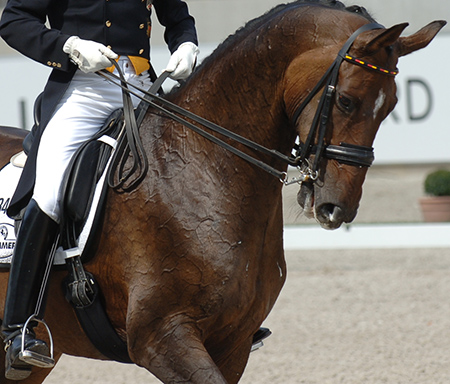
Movements that can show up show tension include the rein back…
At Munich in 1972, Liselott Linsenhoff and Piaff won Gold, Elena Petushkova and Pepel, Silver and Josef Neckermann and Venetia, Bronze.
Here are the two tests that decided the medal winners.


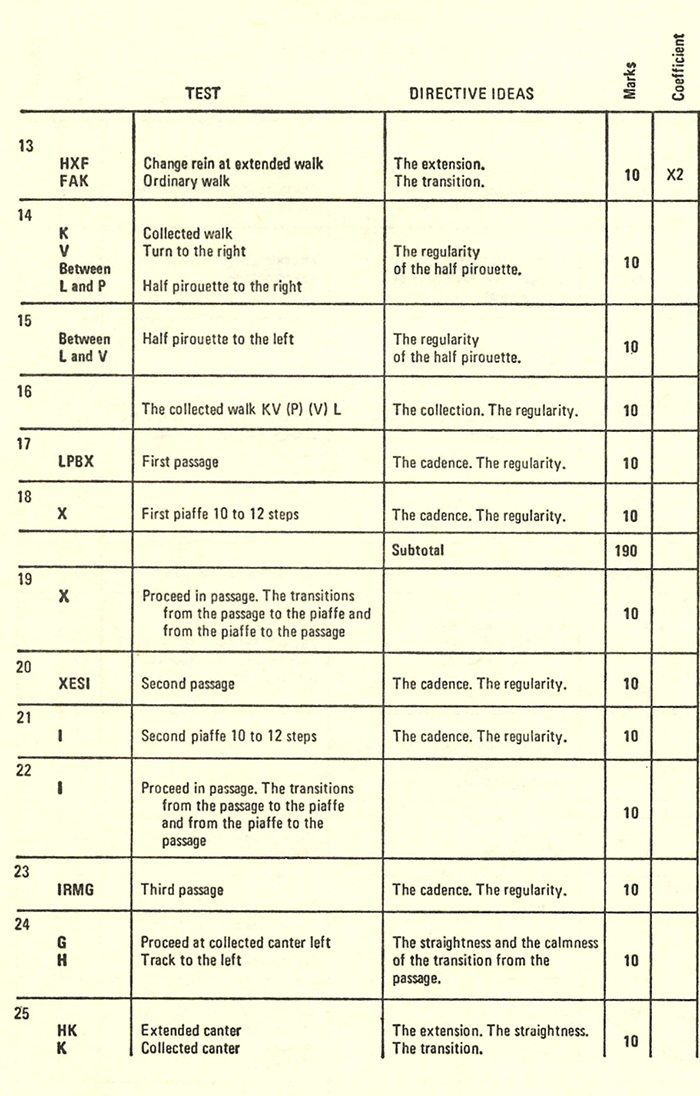
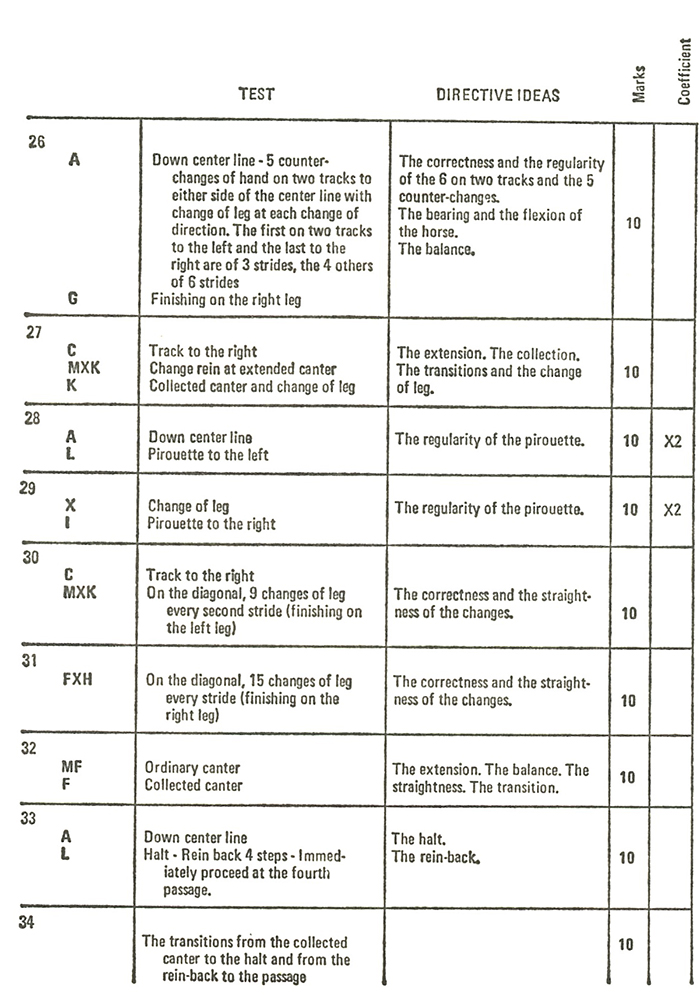
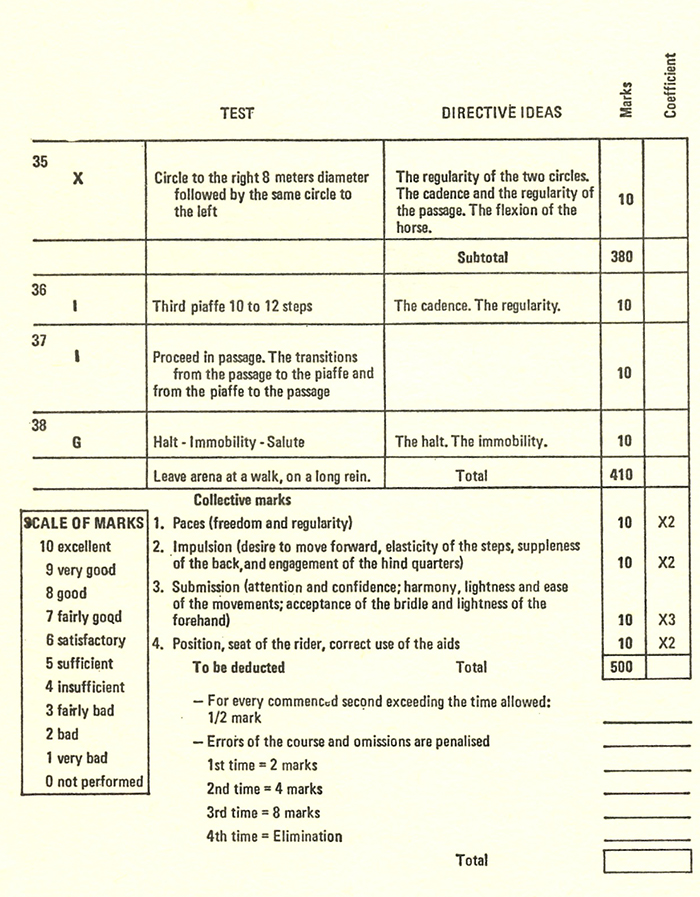


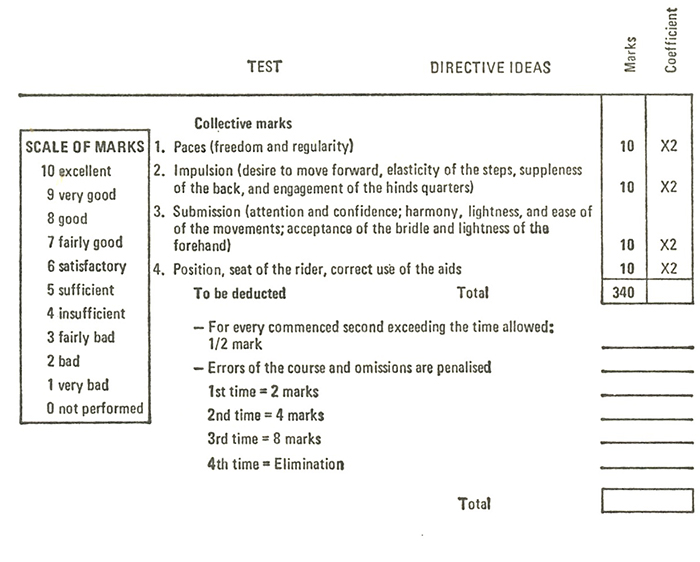
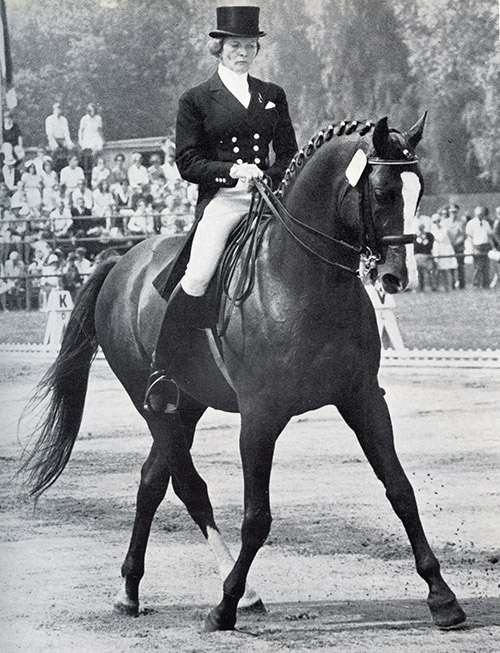
The Gold Medal was won by Liselott Linsenhoff and Piaff
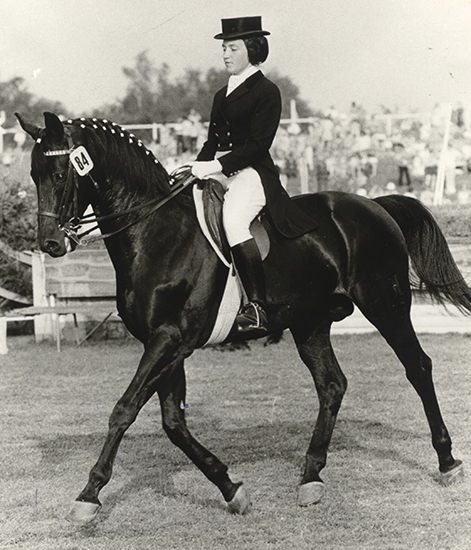
Elena Petushkova and Pepel took Silver
